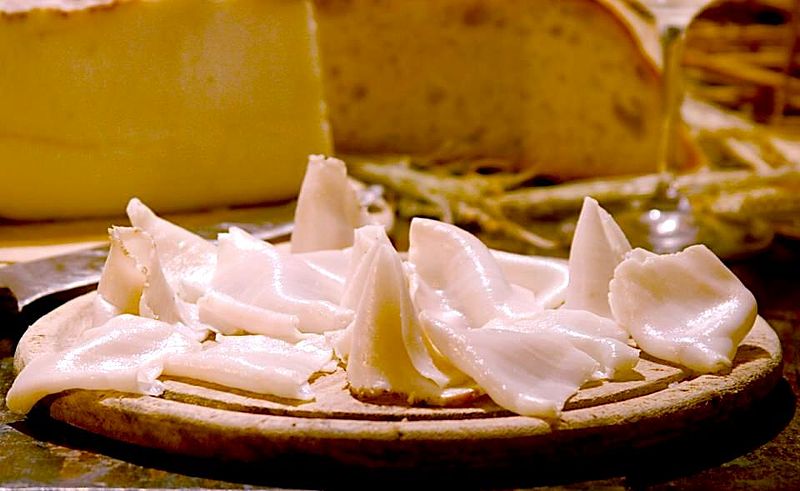Italian Food Gone Wild: Italy’s Strangest Cuisines
Ahhhh, when we think of Italian cuisine we thing of some of the most popular dishes in the world: pizza; pasta; risotto; gnocci; maggoty rotten cheese… !
Yes, the last one threw you, and us, but there are quite a number of unusual dishes which have stood the test of time in Italy, and are still as popular today as they were in Roman times, so let’s check out a few!
1. Casu Marzu
This Sardinian delicacy literally means rotten cheese, and is made by adding fly larvae to fermented sheep cheese, and is eaten when the larvae are alive and kicking.
If you do get the opportunity to try this culinary experience make sure the larvae aren’t dead as they can become toxic, and more importantly, stay well back as these little critters can jump!
2. Lardo Di Colonnata
This dish of cured pig fat is basically a heart attack on a plate, but in the small town of Colonnata it is a traditional dish that dates back to the Roman era. The region is famous for its white marble quarries, where the fat is placed to cure, giving a distinct flavour and colour to this delicacy.
It’s considered such a significant dish that it is entered in the The Ark Of Taste, a catalogue of endangered heritage foods, and its name is protected under the EU scheme of Protected Geographical Indication.
Table of Contents
Photo by OneArmedMan
3. Lampredotto
The Italians hate to see good food go to waste, which is why so many of the following dishes involved the entrails, bits and bobs, and odds and sods from all parts of the animal.
Lampredotto, dating back to the 15th century, is cow tripe boiled and served in a bread roll with tomatoes, a popular dish with the Florentine locals, but unlikely to be found in the sandwich cabinet at Marks & Spencers!
4. Buristo
As with most countries, this is a local speciality that would push a vegan over the edge, but we consider it an ethical food choice by making the most of all parts of the animal.
This Sienese salami involves deboning a pig’s head, boiling it with citrus skin, garlic, and sage, mincing it up with fat and fresh pig’s blood, pouring it into a pig’s stomach, simmering, and slicing and serving – and voila, a sausage is born!
5. Mallegato
Along the same lines, Mallegato is a popular winter dish from Tuscany, made with virtually the same process but this sausage has the added bonus of cinnamon, nutmeg, pine nuts, and raisins added to it, then it’s deep fried.
6. Cibreo
Once again, the good folks of Florence show that heritage and tradition are alive and well with this classic local cuisine – and food sustainability is nothing to be sniffed at!
A dish made up mainly of rooster wattles and combs (but sometimes chicken hearts and livers), and rooster testicles are added to the mix for a special occasion. Not exactly finger lickin’ good – but each to their own!
7. Pani Ca Meusa
Fried veal spleen and lung isn’t everyone’s idea of an ideal sandwich filling but this Sicilian speciality is up there with McDonalds as a fast food option.
8. Pork Blood Cake
Another case of waste not, want not, this tasty sounding sweet derives from Tuscany, and is pretty much what it sounds like. Mix flour, eggs, sugar, milk, vanilla, and blood together, then pour into a pastry shell to make this delicious sounding vampire birthday cake!
9. Raw Snails
Ok, we love our snails, usually served cooked with delicious garlic and parsley butter, but the Italians love their snails raw, and consider them a medicinal remedy for all sorts of gastric problems.
10. Pizza
Yes, we know pizza isn’t odd or unusual, but when it comes out of a vending machine in the home of pizza, we get a bit perplexed! Why on earth would anyone in their right mind choose this alternative to a freshly made one from pretty much any corner of an Italian street – we’d rather eat all of the above than that!
So, there you have it, Italians love their food so much they eat all of it, and with gusto! The best part of these dishes is the tradition and history involved with many of them, and if you can get an Italian talking about it, you’ll hear some great stories – of course, you may need to brush up on your Italian to do this, especially in a small town or village.




